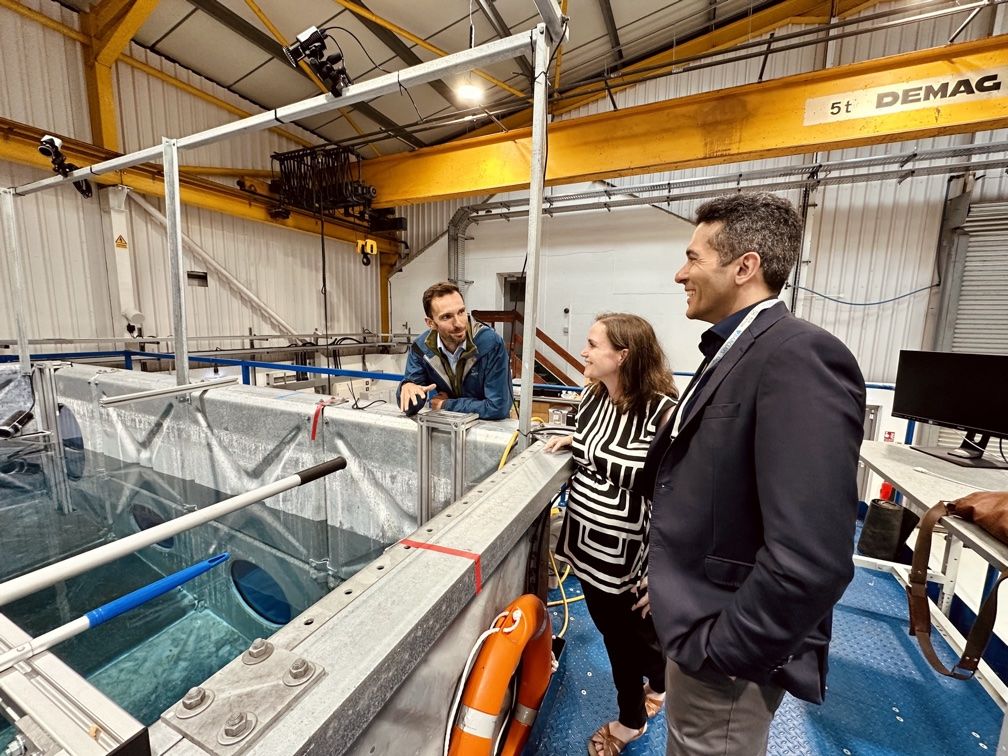News
Q&A – Josh MacAlister, Labour MP for Whitehaven and Workington
11 Nov 2025

Josh MacAlister has been a supporter of RAICo and its endeavours since his election to Parliament as the MP for Whitehaven and Workington in last year’s election. Here we speak to him about his newly released industrial plan for the region, the importance of innovation in nuclear decommissioning, and the role robotics and AI can play in delivering the positive impact he wants to have in West Cumbria.
Your industrial plan emphasises turning Sellafield’s decommissioning expertise into a springboard for new industries. How do you see robotics helping West Cumbria blend its longstanding heritage in nuclear decommissioning with an innovation-led future? Which adjacent sectors do you think West Cumbria could target?
Robotics is the bridge between our heritage and our future. West Cumbria’s history in nuclear generation and decommissioning has built one of the most capable engineering workforces in the world. The skills we’ve developed – robotics, remote handling, data management – are exactly the ones the clean-tech economy needs next.
The same technologies that safely dismantle legacy nuclear facilities can be redeployed in offshore wind, hydrogen production, advanced manufacturing and even aerospace. By investing in robotics, we can take what we’ve learned at Sellafield and turn it into a global export. That’s how decommissioning becomes a springboard, not an anchor – using it to create new industries that are global, high-tech and low-carbon.
The report calls for a stronger innovation ecosystem linking the UKAEA, UKNNL, and universities, such as Cumbria and Manchester, with local enterprise. What role do you think organisations like RAICo can play in bridging research excellence and commercial opportunity in West Cumbria?
RAICo is central to this next phase. It already demonstrates what can happen when the UKAEA, the nuclear decommissioning industry, and our universities work hand in hand with local enterprise. It brings together the best of our national science base and the energy of local innovators.
In the plan, I talk about linking research excellence directly to commercial outcomes – turning ideas into businesses that stay here and grow here. RAICo does exactly that. It’s helping to translate robotics research into industrial tools and supply-chain contracts. If we scale that model up, West Cumbria becomes not just a site of world-leading science, but a place where that science drives prosperity.
One of the plan’s ambitions is to create an “AI Growth Zone.” How might R&D in nuclear decommissioning environments support this vision and position West Cumbria as a national centre?
Our plan – which is being taken very seriously by the Government – and I am in regular contact with ministers and officials to drive it forward – would make Pioneer Park, adjacent to Sellafield, home to the world’s first nuclear-powered AI and technology hub, fusing two national strengths: clean energy and digital innovation. Small Modular Reactors at Pioneer Park could generate over a gigawatt of clean, reliable power, directly connected to an advanced data-centre and AI infrastructure. That combination – abundant energy, fibre connectivity, and national-level security – makes this one of the most exciting digital opportunities anywhere in the country.
R&D in robotics and nuclear environments feeds naturally into this. The datasets, simulation work and machine-learning models developed for remote operations are exactly what underpin AI in other industries. By linking those capabilities with national initiatives in embodied intelligence and automation, we can position West Cumbria as the UK’s testbed for AI in complex, high-reliability settings – from clean-energy systems to advanced manufacturing. In short, this isn’t just an AI zone in name; it’s where artificial intelligence will power, and be powered by, Britain’s clean-energy revolution.

The report identifies workforce retention and skills as vital to West Cumbria’s future. How can advanced robotics and remote handling technologies make nuclear decommissioning work more attractive to the next generation of engineers and technicians?
Robotics and digital technology make nuclear work cutting-edge again, transforming the job from one of manual risk into one of precision engineering.
For young people, that’s inspiring. It means working with world-class kit, designing intelligent systems, and contributing to a national mission in clean energy. Programmes through the National College for Nuclear, Gen2 and the University of Cumbria are already adapting to this, giving apprentices and graduates the chance to code, operate and innovate from day one. The Cumbria Robotics Operations Skills Centre (CROSS) is another initiative that will support and accelerate skills development.
By showing that West Cumbria’s future lies in technology, not just tradition, we’ll keep our brightest talent here and attract new expertise from across the UK and beyond.
Finally, your plan sets out a vision of West Cumbria as a pioneer community once again. How do you see robotics innovation helping to restore that pioneering spirit while strengthening the region’s identity as a world leader in clean, high-tech industry?
Calder Hall made history as the world’s first commercial nuclear power station. That spirit of invention still runs deep in this community. Robotics and AI give us the opportunity to channel it into the next clean-energy revolution.
Through Pioneer Park and the AI Growth Zone, West Cumbria can once again lead Britain in developing technologies that change the world – clean power, intelligent systems, and industries that combine both.
If we deliver this together – local and national government, industry, and community – we won’t just be managing decline; we’ll be writing the next great chapter in British industrial innovation, led once again from the Cumbrian coast.
